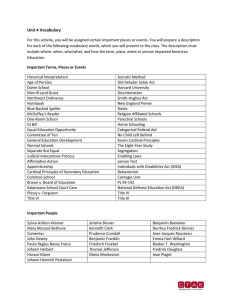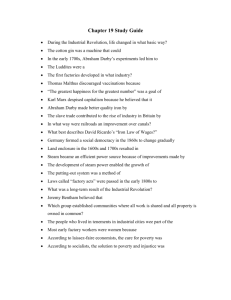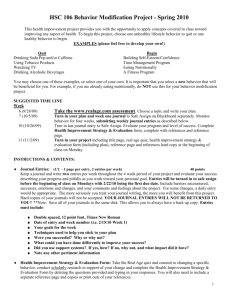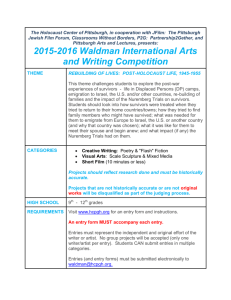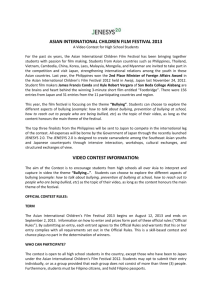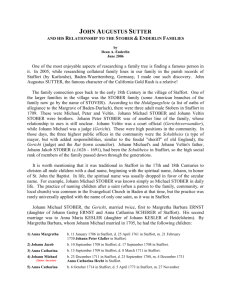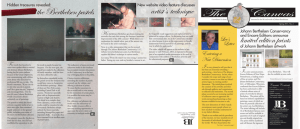Webquest Assignments
advertisement
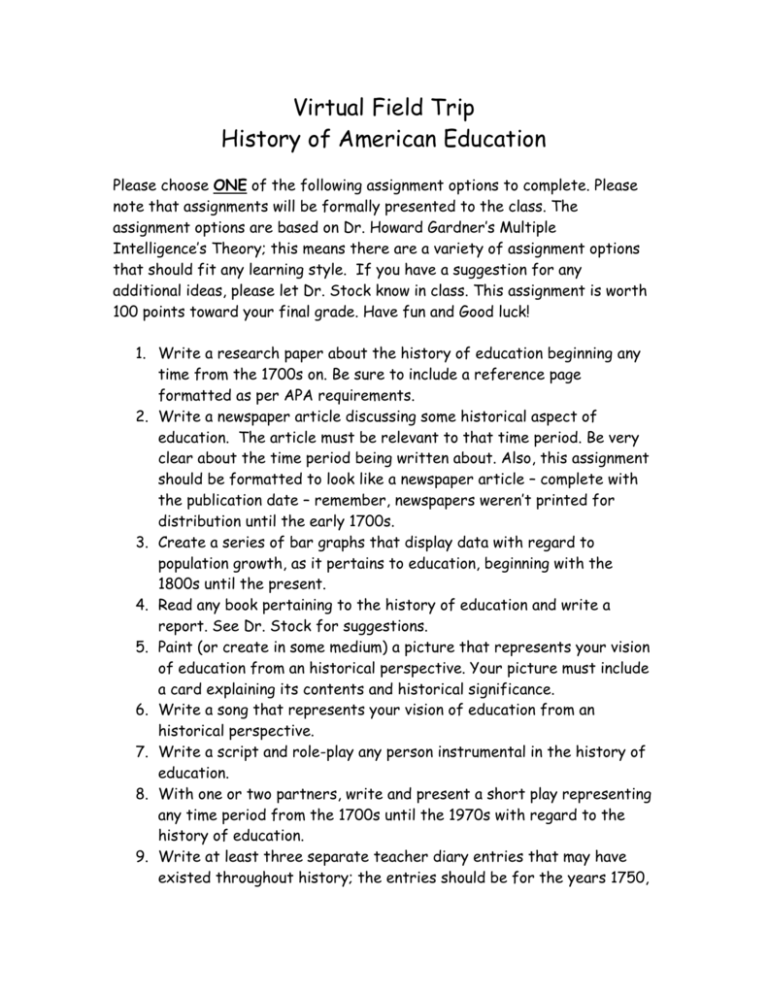
Virtual Field Trip History of American Education Please choose ONE of the following assignment options to complete. Please note that assignments will be formally presented to the class. The assignment options are based on Dr. Howard Gardner’s Multiple Intelligence’s Theory; this means there are a variety of assignment options that should fit any learning style. If you have a suggestion for any additional ideas, please let Dr. Stock know in class. This assignment is worth 100 points toward your final grade. Have fun and Good luck! 1. Write a research paper about the history of education beginning any time from the 1700s on. Be sure to include a reference page formatted as per APA requirements. 2. Write a newspaper article discussing some historical aspect of education. The article must be relevant to that time period. Be very clear about the time period being written about. Also, this assignment should be formatted to look like a newspaper article – complete with the publication date – remember, newspapers weren’t printed for distribution until the early 1700s. 3. Create a series of bar graphs that display data with regard to population growth, as it pertains to education, beginning with the 1800s until the present. 4. Read any book pertaining to the history of education and write a report. See Dr. Stock for suggestions. 5. Paint (or create in some medium) a picture that represents your vision of education from an historical perspective. Your picture must include a card explaining its contents and historical significance. 6. Write a song that represents your vision of education from an historical perspective. 7. Write a script and role-play any person instrumental in the history of education. 8. With one or two partners, write and present a short play representing any time period from the 1700s until the 1970s with regard to the history of education. 9. Write at least three separate teacher diary entries that may have existed throughout history; the entries should be for the years 1750, 1850 and 1950. The entries must contain evidence that is representative of that particular time period. Be as authentic as possible, including the medium used for the assignment - computers / word processing weren’t available during these time periods. 10. Research one or more of the following populations typically marginalized throughout education. Write a paper and create a powerpoint presentation highlighting the main points, to share with the class: African Americans, Native Americans, Hispanic Americans, Asian Americans, and Females. 11. Write a 3-5 page paper on any one of the following people (APA format): Comenius (Jan Komensky), Jean-Jacques Rousseau, Johann Heinrich Pestalozzi, Friedrich Froebel, Johann Herbart, Emma Hart Willard, Horace Mann, Prudence Crandall, Maria Montessori, John Dewey, Mary McLeod Bethune, Jean Piaget, Burrhus Frederick (B.F.) Skinner, Sylvia Ashton-Warner, Kenneth Clark, Jerome Bruner, Paulo Reglus Neves Freire, Septima Poinsette Clark , Madeline C. Hunter, Charlotte Hawkins Brown, Johnetta Cole, Joyce Ladner, Henri Mann 12. Structure a debate (or use another academic controversy strategy) arguing the pros and cons of the follow proposition. Resolved: Teacher preparation programs should focus on current issues and not consider the history of education. 13. Interview five people – each having attended school during the 1950s, 1960s, 1970s, 1980’s and someone current in or having just graduated. Type a good synopsis of each interview and create a chart comparing / contrasting the information you have learned. A complete list of interview questions should be completed and shared with Dr.Stock PRIOR to any interviews being completed. 14. Watch one of the following movies: Blackboard Jungle, The Miracle Worker, To Kill a Mockingbird, or To Sir, With Love, Stand and Deliver, or Lean on Me. After watching the movie, please reflect on the following: a. Does the film you viewed remind you of a current issue? Which one(s)? Describe the similarities and differences. b. What elements of effective teaching did you observe in the film? Is good teaching in this time period still considered good teaching today? c. Would you like to teach in the school depicted in the film? Why or why not? 15. Visit a local one-room school house and create a report, complete with pictures to share with the class. 16. Research the history of any school in our local area, write a formal report and include pictures to share.
